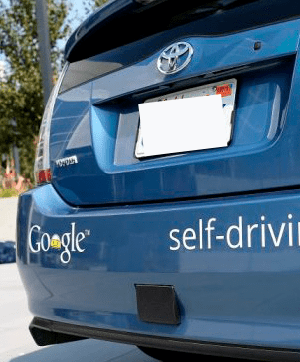 I have often joked over the years that my faithful station wagon — Number Seven I think this one is — could make it to Raleigh or to the beach even if I were not in it. We have been together for so long and driven those roads so many times, this almost seems true, though, of course, it is not. Vehicles still require human pilots — at least for now.
I have often joked over the years that my faithful station wagon — Number Seven I think this one is — could make it to Raleigh or to the beach even if I were not in it. We have been together for so long and driven those roads so many times, this almost seems true, though, of course, it is not. Vehicles still require human pilots — at least for now.
Tesla, the plug-in electric car, Ford, Google, Volvo and probably others still holding on to their privacy are also working on their versions of driverless cars. Now, Uber, that wildly convenient and successful challenger to the conventional taxi cab business, says it will have its own fleet of driverless Volvos on the streets of Pittsburgh within the next few weeks — not years! Even more, Uber has acquired a startup company, Otto, with a goal of driverless commercial semis. Interstate driving will never be
the same.
Now, I am a great Uber fan. The Precious Jewels introduced me to Uber several years ago, and my first Uber ride was in a shiny black SUV from Union Station in Washington, D.C., to a hotel near DuPont Circle carrying seven passengers and lots of luggage. One of the Jewels sprang for the ride on her credit card — no cash involved with Uber —and it was just over $19, a real deal in my book for such a crowd. My next Uber ride occurred when one of the Jewels tucked me into an old Toyota sedan driven by a jovial retiree. Said the Jewel to the driver, “You take good care of my mama!” and the Uber driver did.
That being said, I am not sure — were I suddenly transmitted to Pittsburgh — that I would put my big toe inside Uber’s new driverless Volvos, safety ratings notwithstanding.
Not that my own driving record is perfect. I have had my share of fender-benders, including a rear-end collision or two, which is always the fault of the driver who rear-ended. I sideswiped a pole in a grocery store parking lot a year or so ago, a vehicular booboo that set me back $1,400. Years earlier, with a barely-verbal toddler in his car seat, I backed into another parking lot pole in station wagon Number One, which earned only a tiny dent I thought no one would notice. Unfortunately, when we got home, that toddler in the back seat turned into Chatty Cathy and informed our entire household, “Mommy had a wreck today.” So much for discretion.
We all see news stories about drivers who make fatal mistakes, who drive while impaired by substances or fatigue, or who are too young, old or inexperienced to be behind the wheel. Too many of us have suffered in terrible ways because of human drivers who failed somehow. Obviously, some of us are probably not as capable a driver as an automated vehicle might be.
A quick search regarding driverless vehicle safety turns up plenty of information, most of it scientific papers and engineering formulae not readily digestible by a layperson, or at least by this layperson. Scientists are taking safety challenges of driverless vehicles seriously, and I have no doubt that they are in our future. After all, station wagon Number Seven does have a system whereby a light comes on if I get too close to a car on either side, and it beeps when I get too close to something in front or behind me, a feature that can be very handy in parking lots with poles.
I am also the proud owner and great fan of a robotic vacuum cleaner which devours dust balls when I am not at home. One day soon, I also expect an online purchase to be delivered by a drone, which I hope does not hit me on
the head.
The obvious advantage of driverless cars is reduction of human error and its sometimes-dreadful consequences. People would have more free time if we were not driving so much, traffic could flow more efficiently, less road signage would be required, as well as less parking space since all driverless cars would know how to park in tight spaces. What’s more, your car could pick up the children from school and scoot by the grocery to retrieve your pre-bagged goods.
On the other hand, it will take time and lots of money to transform millions of vehicles into self-drivers, and there are all sorts of liability and regulatory issues. People who drive for a living will lose jobs, and our current road infrastructure may need revamping to accommodate self-drivers. And, bottom line, some of us human beings are just not going to want to give up driving our own vehicles.
Whenever my young self got eager to embrace the latest of the latest trend, my mother quoted the 18th century satirist, social commentator, and champion of the heroic couplet, Alexander Pope. “Be not the first by whom the new is tried, nor yet the last to lay the old aside.”
Pope had to be thinking about the driverless car.

 How to resolve AdBlock issue?
How to resolve AdBlock issue? 








